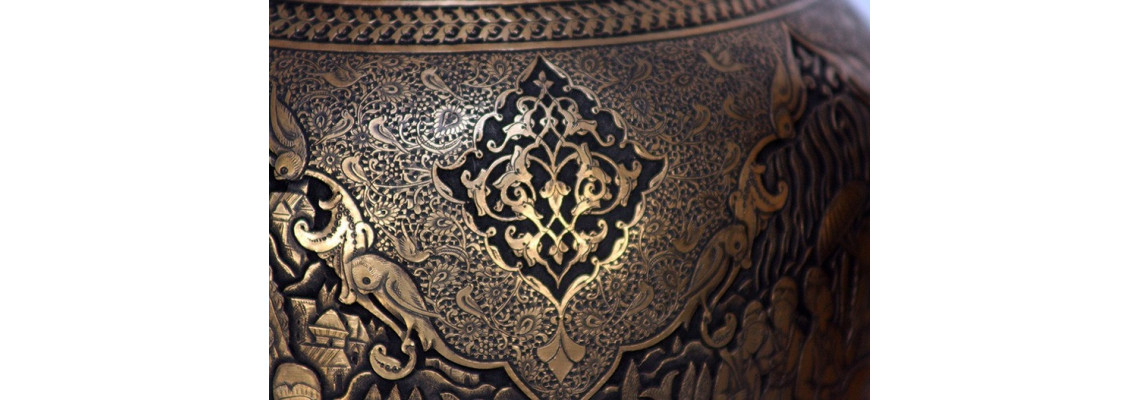
Post: The Art of Persian Metal Work on Brass, Copper & Silver – Part II
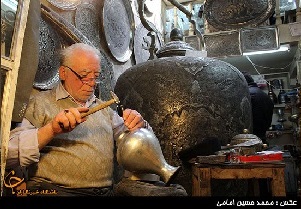

Late medieval metalwork. By the end of the 14th century, following Timur’s invasion of Iran during the last decade of the century, the focus of royal patronage, including metalwork, shifted eastward, first to western Central Asia and then to Khorasan. The earliest metalwork produced under Timurid patronage, a bronze basin and six brass oil lamps commissioned by Timur, are mainly preserved at the shrine of Sufi Shaikh Aḥmad Yasavi (d. 562/1166) in Yasi, Kazakhstan (Komaroff, 1992a, pp. 17-43). The basin, notable for its enormous size (ht. 1.58 m, diam. 2.43 m) was specifically made for the Yasavi complex in 801/1398-99 according to its inscriptions, which suggest that this was a water vessel for pilgrims to the shrine. The oil lamps, also large (average ht. 90 cm) can be dated between 1401 and 1405 and are likewise associated with the shrine. Their form, function, fine gold and silver inlaid decoration, and epigraphic style combine different artistic traditions from Iran and elsewhere, which must have been brought to western Central Asia as a direct consequence of Timur’s victorious campaigns.
A distinctively Timurid style of metalwork emerged by the second quarter of the 15th century and continued into the 16th century. It is documented by some twenty-five signed and/or dated objects. Among the signed objects, several include affiliations (nesba) formed after place names near Herat, which must have been the main center of production. A larger group can likewise be attributed to Khorasan in the 15th-16th centuries by analogy with the signed and dated wares (Komaroff, 1992a, pp. 51-105). Primarily cast in brass, these objects can be divided into two general types: one inlaid with precious metal, the other engraved and tinned. Both are distinguished from earlier Iranian metalwork by their shapes, techniques, inscriptions and decoration. A type of pot-bellied jug with a dragon handle was especially common (Figure 3). Other shapes include shallow dishes, deep basins and covered bowls, and candlesticks that occasionally preserve sockets in the form of a pair of entwined dragons. The inlay technique is much finer than earlier, using slender strips of sheet metal and wire. Engraved and tin wares represent a long standing technique, but their higher quality and greater quantity show that they were now produced as luxury wares. Tinning was used externally to create a silvery surface and color, and contrast was added to both inlaid and engraved objects by filling the backgrounds with a bituminous black material. Epigraphy and floral and vegetal motifs are the primary means of decoration; figural imagery is rare (Komaroff, 1992a, pp. 147-249).
The inscriptions frequently consist of Persian poetry, generally well inscribed well and free of mistakes, and at times reflecting contemporary developments in calligraphy, such as the new nastaʿliq script. The texts usually allude to the objects on which they are inscribed and often quote earlier poets such as Saʿdi and Ḥāfeẓ, as well as poets active in 15th-century Khorasan such as ʿAbd-al-Raḥmān Jāmi, Qāsem-e Anwār, and Saliḥi (Komaroff, 1992b, pp. 144-46). The appearance of the latter’s verses on metalwork produced during their lifetimes often helps to confirm the attribution of these pieces to Khorasan. Two dragon-handled jugs, one in the British Museum, London, dated 903/1498, are inscribed with the name and titles of the Timurid ruler of Khorasan Sultan Ḥosayn Bāyqarā(r. 875-912/1470-1506; Komaroff, 1992a, pp. 179-80).
Only a few wares can be attributed to western Iran in the late 14th and early 15th century. These demonstrate that the metalworking centers in Fars and Azerbaijan continued to work in the manner established earlier. A pen-case in the Musée des Beaux-Arts, Lyon, and a bowl in the Victoria and Albert Museum, London, can be attributed to Azerbaijan during this transitional period (Komaroff, 1992a, p. 30). The only object from the later 15th century that can be ascribed with certainty to western Iran is a tall oil lamp in the David Collection, Copenhagen, inscribed in the name of the Āq Qoyunlu ruler Uzun Ḥasan (r. 1453-78; Melikian-Chrivani, 1987, pp. 126-31).
Metalwork from the first decades of the 16th century under the Safavid dynasty continued the forms, techniques, and styles that had evolved in the preceding century in eastern Iran. Such wares can only be distinguished from earlier Timurid examples on the basis of the dates or the content of their inscriptions. As in the preceding period, the most frequent type of dated object is a pot-bellied jug with dragon-shaped handle inlaid in gold and silver. Another common form perhaps newly introduced is a small, cylindrical inkwell with dome-shaped cover. Unlike the Timurid wares, these works frequently bear prayers in Arabic. An inkwell dated 919/1513 in the Victoria and Albert Museum, London, is inscribed with two prayers, one invoking the names of the Prophet and the Twelve Imams, the other addressed to Imam ʿAli (Komaroff, 1992a, pp. 255-56). The Shiʿite nature of these inscriptions does not necessarily place the object within the milieu of the Safavid dynasty, but the specific prayer to Imam ʿAli, seems first to have been inscribed on the coins of the dynasty’s founder, Shah Esmāʿil I (Komaroff, 1992a, pp. 123-24).
Metalwork production at the first Safavid capital Tabriz is attested by three cylindrical, dome-covered inlaid inkwells, all signed by the same artist Mirak Ḥosayn Yazdi (Komaroff, 1992a, p. 125; Thompson and Canby, eds., p. 219, Cat. no. 8.14). This shape is also documented in contemporary manuscript illustrations from Tabriz. The inkwells are decorated with medallions filled with radial designs of stylized cloud scrolls and the overall scheme is more spacious and rhythmic and less rigid than the precise, crowded designs typical of 15th-century wares.
In the second quarter of the 16th century the decoration became stiffer and more schematized. This transitional style is found primarily on engraved and tinned wares. On a bowl dated 942/1535-36, kept at the Metropolitan Museum of Art, New York, the traditional decorative vocabulary, vegetal and abstract ornament divided among interlocking and overlapping compartments, is maintained, but the motifs are abstracted and the calligraphy is more prominent (Thompson and Canby, eds., p. 212, Cat. no. 8.7). This type of metalware continued to be produced in a provincial style in Khorasan and western Central Asia well into the second half of the 16th century. Other objects can be attributed to western Iran such as a jug, in the Victoria and Albert Museum, which maintains the traditional pot-bellied shape and decoration divided among medallions and cartouches, but the design is more sharply defined, and less linear and compact (Melikian-Chirvani, 1982, pp. 287-88).
Several objects demonstrate the arrival of a new style of metalwork in western Iran around the third quarter of the 16th century. This novel aesthetic is characterized by sleek, tapered forms, while engraved (non-inlaid) figurative decoration reappeared but remained less important than vegetal and abstract ornament, and inscriptions innastaʿliq proliferated (Melikian-Chirvani, 1982, pp. 263-66).
The most important one among the newly introduced shapes is a columnar lampstand in the form of a tapered cylinder with a chamfered or faceted middle section and a flared base. The earliest dated example is one that was endowed to a shrine in Sāmarrāʾ, Iraq, in 959/1561-62, but the shape may have been introduced earlier from India in the second quarter of the century (Melikian-Chirvani, 1982, pp. 263-64). There are several closely related examples, including one in the Hermitage Museum dated 987/1579-80, which preserves its lamp in the form of a footed cup (Thompson and Canby, eds., pp. 216-17, Cat. no. 8.12) and a similar but undated lampstand in the Museum of Islamic Art, Doha (Figure 4). Such objects are engraved all-over with patterns of spiraling split-leaves or zigzag bands and with lozenge-shaped cartouches filled with vegetation arranged to emphasize the sleek contours of the form. Other wares, such as globular-shaped, slender-necked ewers with thin, curved spouts and buckets with slender bases and upward curving sides, can be dated to the same period because of their similar decoration and characteristicnastaʿliq inscriptions with Persian verses. Dates and owners’ names are often inscribed in cartouches, but the number of such empty cartouches suggests that owners’ names were added after the object was purchased (Melikian-Chirvani, 1982, p. 293).
The same shapes and decorative vocabulary continued into the early 17th century under Shah ʿAbbās I (r. 996-1038/1588-629). A common type from this period is a wine bowl with shallow foot and flaring lip. Lamp-stands, bowls and other vessels were typically decorated with repetitive vegetal and abstract patterns similar to those found in contemporaneous manuscript illuminations and bookbinding or on carpets. Human and animal figures are once again a primary means of decoration and are comparable to contemporary drawings and illustrated manuscripts. Such engraved pieces occasionally bear Armenian inscriptions alongside the more common Persian verses; they probably belonged to members of the Armenian community established by Shah ʿAbbās in New Julfa (see JULFA) on the southern edge of Isfahan (Melikian-Chirvani, 1982, pp. 272-73).
The style associated with the reign of Shah ʿAbbās lasted throughout the 17th century, as demonstrated by several objects, including a covered bowl dated 1089/1678-79 in the Victoria and Albert Museum (Melikian-Chirvani, 1982, pp. 336-37). These wares are usually attributed to western Iran, more specifically to Isfahan, because of their similarity to other arts produced there or on account of their Armenian inscriptions. Some engraved and tinned wares dateable to the late 16th century or the early 17th century have been ascribed to Khorasan, as their inscribed owners’ names include references to places in that region. They are decorated with the same type of abstract and figural ornament found on objects from western Iran, but the design is organized in a more spacious manner and always includes cross-hatching. The dates and attributions for many later 16th- and 17th-century wares are open to question. In contrast to the 15th- and 16th-century pieces, their inscriptions often supply the name of the owner but rarely contain artists’ signatures or clues to the provenance (Melikian-Chirvani, 1982, pp. 303-55).
A group of cut-steel objects overlaid with gold can be associated with western Iran in the 16th and 17th centuries. Beginning in the 16th century, cut steel was used to make vessels and especially pierced plaques, medallions, and standards. The decoration of such objects is better related to contemporary cut and gilded armor than to engraved brass and tinned wares of the same period (Allan and Gilmore, pp. 253-81, 294-97).
Early modern metalwork. Thousands of pieces of metalwork produced under the Zand and Qajar dynasties have survived, but they are of modest merit, generally utilitarian brass and copperwares with the exception of some fine examples of cut-steel, including copies after 17th-century pieces (Allan and Gilmore, pp. 319-20).
Buy Persian Handicrafts at: www.persianhandicrafts.com
Buy Persian Rugs at: www.kimiyacarpet.com.com
Facebook: https://www.facebook.com/persispersianhandicrafts
Google+: https://plus.google.com/+Persiscraftspersianhandicrafts
Twitter: https://twitter.com/persiscrafts
Article Source: Click Here
Please Join Our Social Networks to Support us:
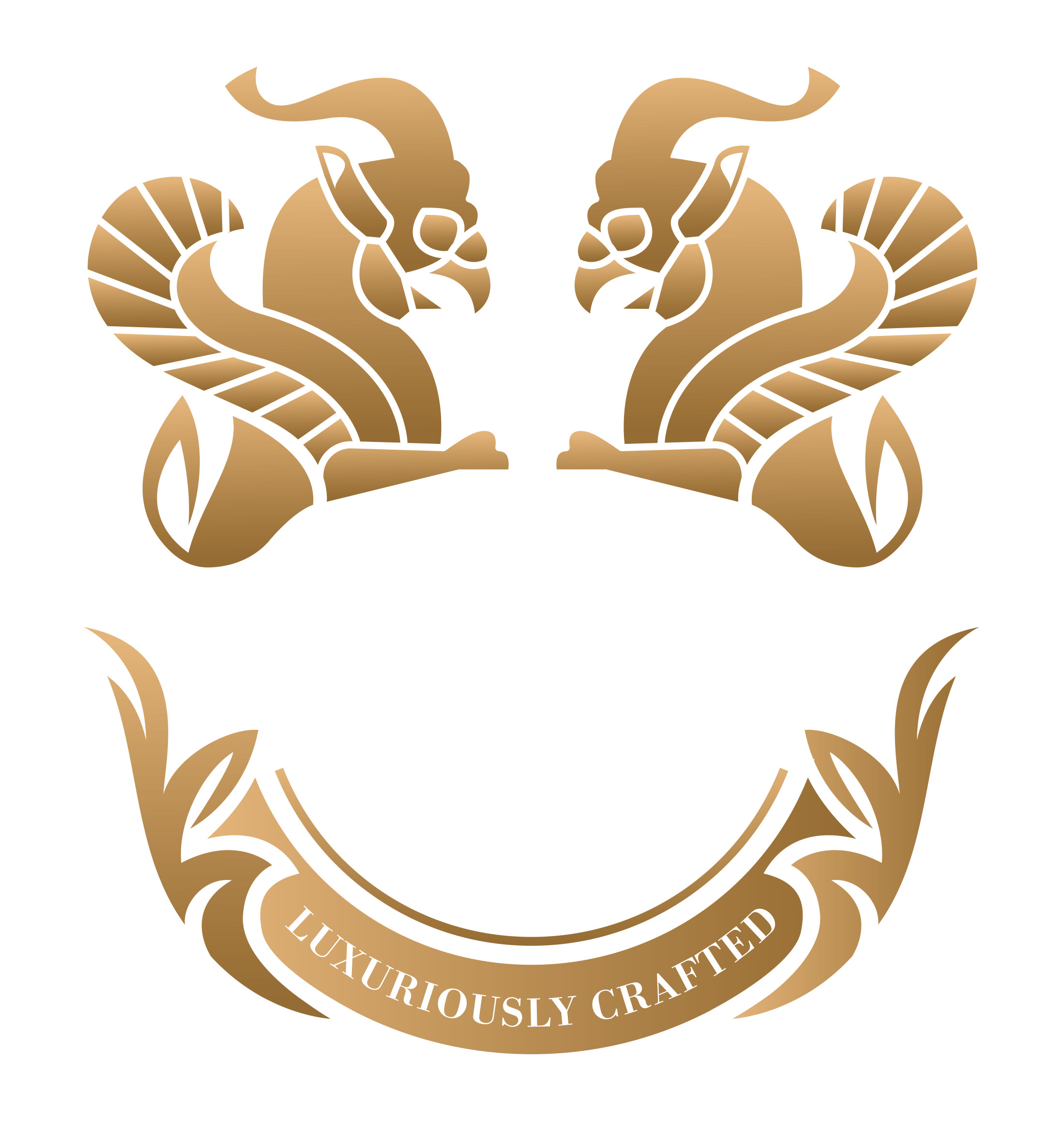
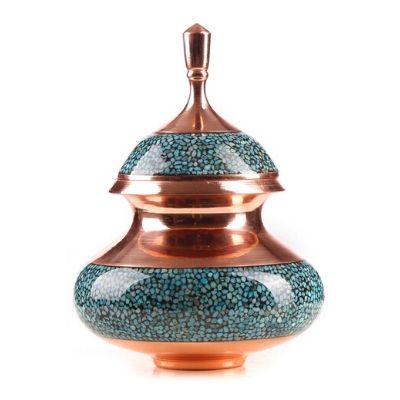
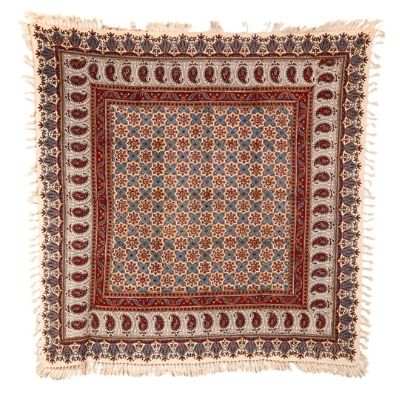
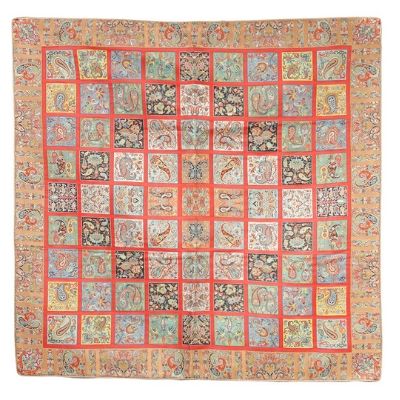
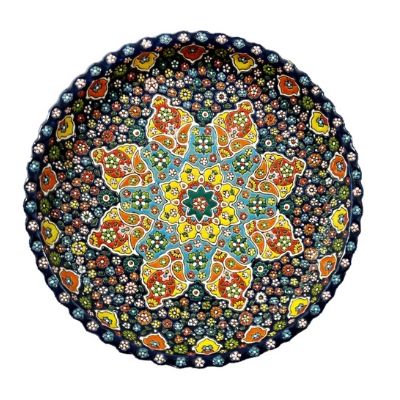
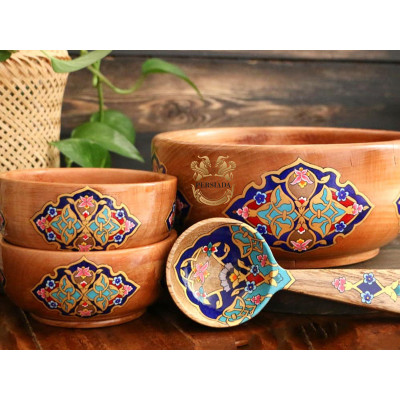
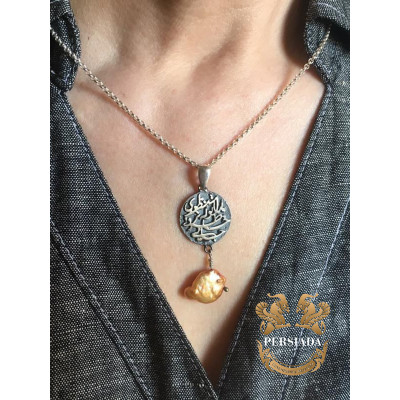
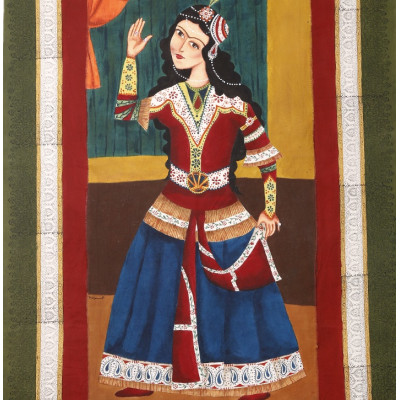
-400x400.png)
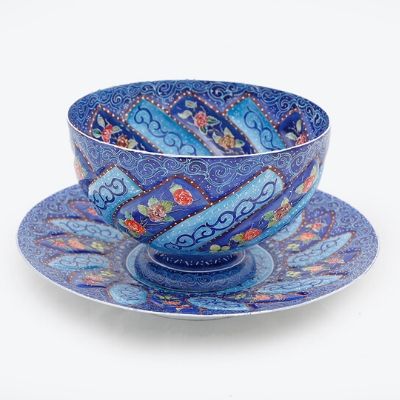
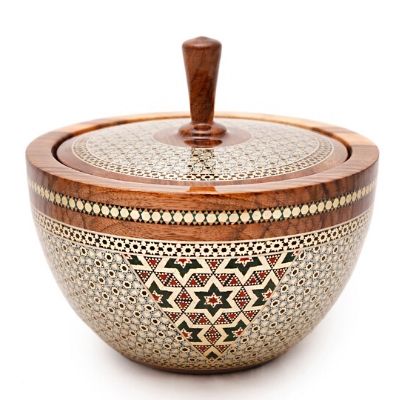
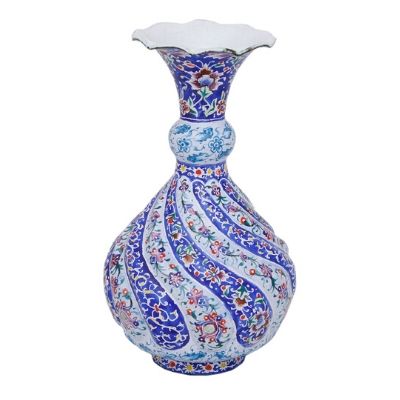
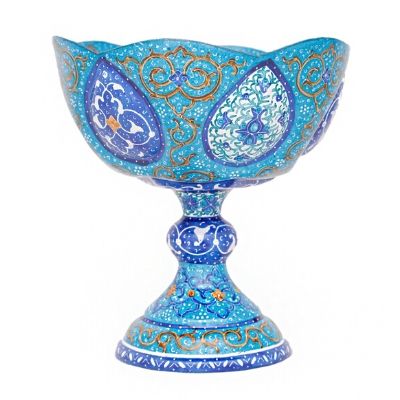
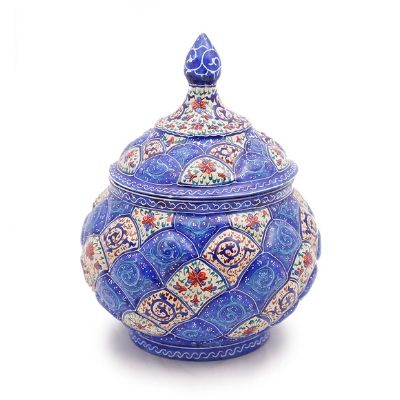
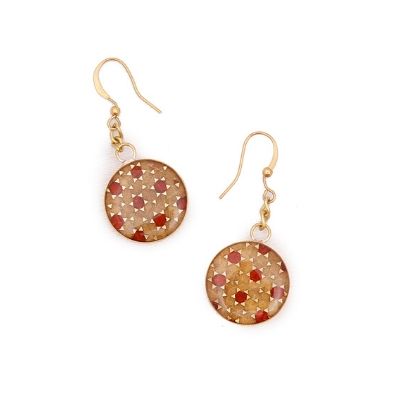
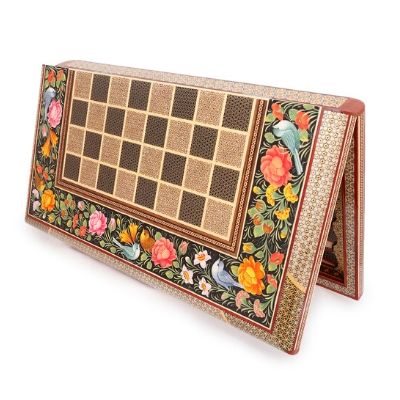
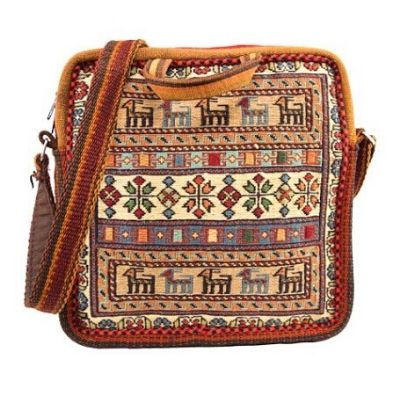
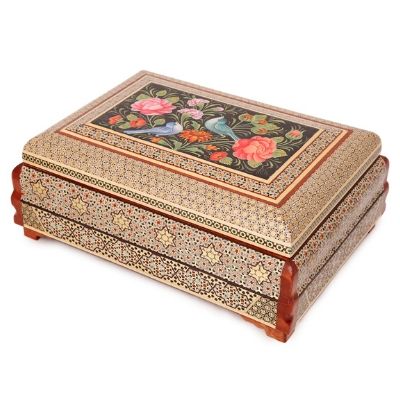
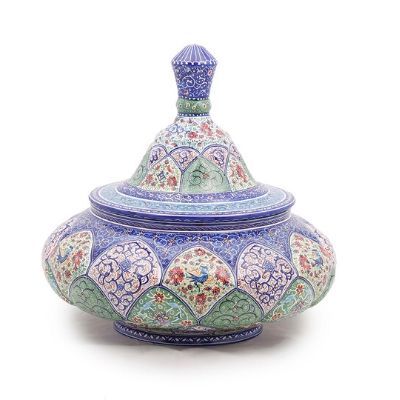
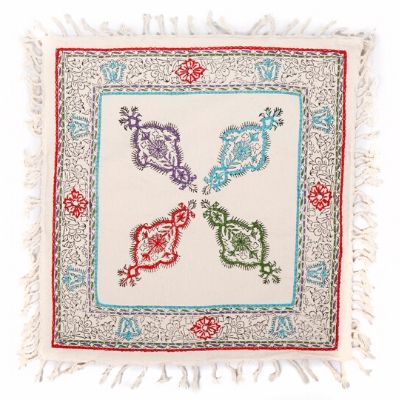
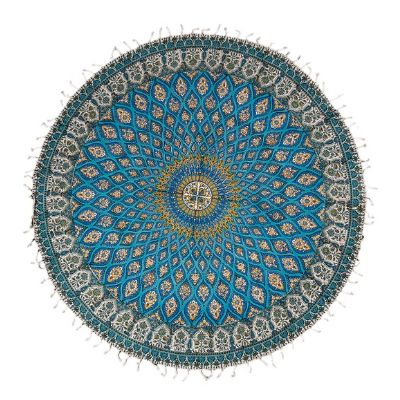
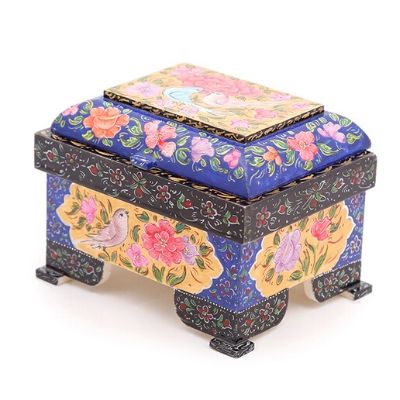
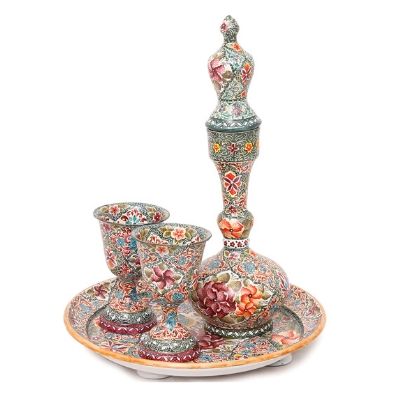
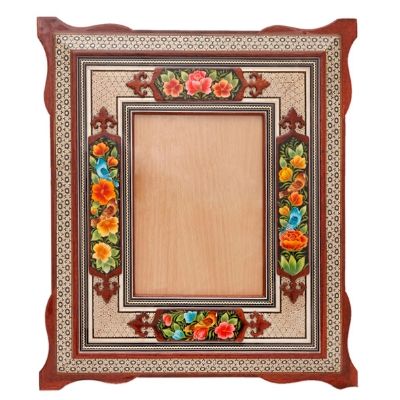
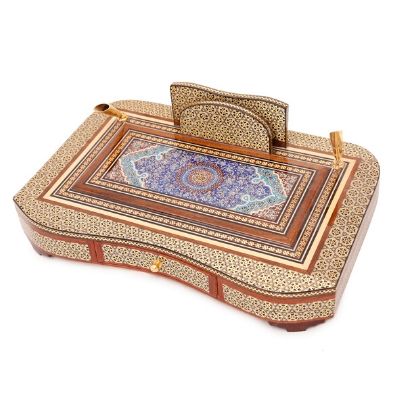
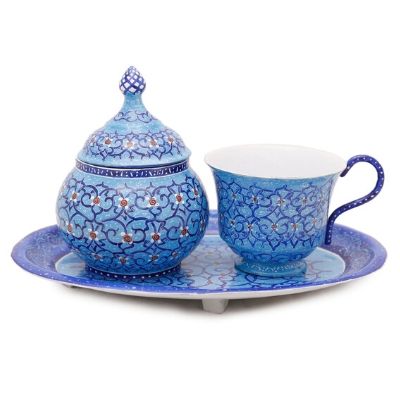
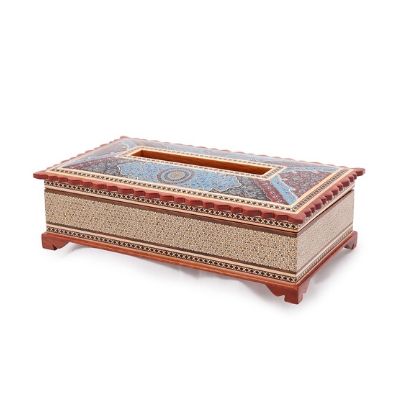
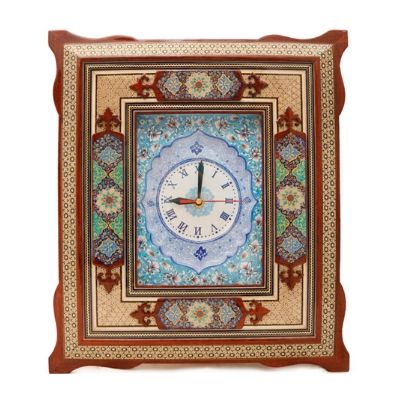
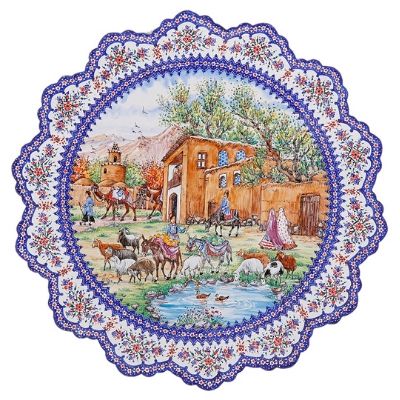
Leave a Comment